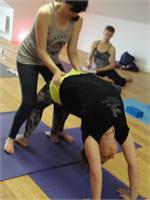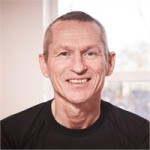Adjustments & Consent: Jozef's Viewpoint
Adjustments & Consent: Jozef's Viewpoint
To adjust or not to adjust? That is the one of the questions currently being posed in the worldwide yoga community - read our short introduction to the debate here. We've already heard Camyoga teacher Camilla's opinion on this subject, now here's what Hot Yoga teacher Jozef has to bring to the table:
"I work as a physical therapist/masseur and therefore I am used to touching people with sensitivity, and always after an extensive talk with the client, followed by a physical examination. When there are no issues which need further clarification, through X-rays or other medical diagnostic assistance and we are both still happy to continue, then hands-on work will take place.
In my other work as a yoga teacher most of the time I don't know the students in my class and the way their bodies are constructed, their possible issues whether physical or emotional and sometimes they don't even know themselves.
So in general I would say I prefer to guide my students into postures using a verbal dialogue and when I see they are not doing a posture correctly then I will suggest corrections using dialogue. If they are still unable to self adjust then I will demonstrate the posture myself and the adjustment I would like them to make, failing this I may use an assistant or address the student after class about it.
When I do touch I will use short, subtle touches to invite them into the direction I think they should go in, maintaining awareness so that excessive resistance can be examined as this may mean that they simply cannot make the adjustment and their or my force should not be applied.
"To me yoga is not about going deep or how you look on the outside"
I use my Hot Yoga Master classes and workshops to invite students, through deepening their knowledge of anatomy/postures, to understand their bodies better and how this can lead to safer posture work and hopefully less frustration and/or confusion. This is another way they can learn how to bring their bodies to the postures instead of bringing the posture to their body and also another opportunity for me to learn more about their specific needs and challenges.
In my classes I tend to emphasise the importance of technique, alignment and how, with the use of your breath, you can allow yourself to emerge in your posture without forcing or pushing. To me yoga is not about going deep or how you look on the outside, when you push yourself beyond your flexibility it can cause harm to your body both in the short term and more importantly in the long term.
Of course I do value the teacher-student connection and I always make myself available before and after class to help individual students and to answer their questions. However I do not think that human touch is an important part of yoga practice. I deliberately use the term 'human' touch here because when I teach Yin yoga the props used to support the student creates touch and this allows the student to relax more into that specific posture. And yes there are benefits to hands-on adjustments - I myself have been adjusted by some great teachers and the effect can be amazing. However once again, I like to stress that there can be the risk of injuring students, confusing /frustrating them and the teacher when the intended correction does not take place.
Though the teacher may have the best intention, the student may never be comfortable with the adjustment brought about by forced touch."
Jozef Wiewel teaches Hot Yoga and Yin Yoga at our Central Studios in addition to teaching a Hot Yoga Masterclass on the first Saturday of every month.


